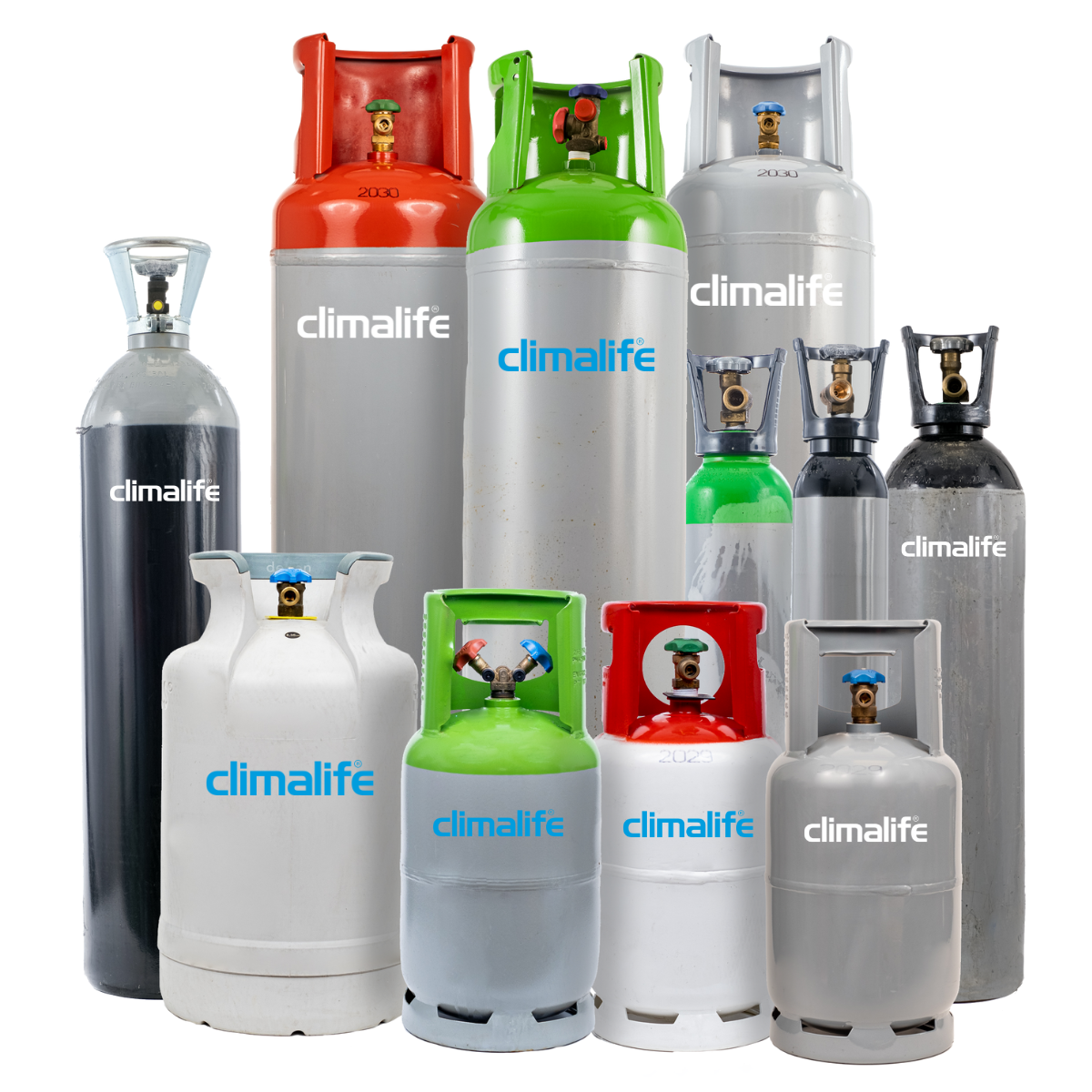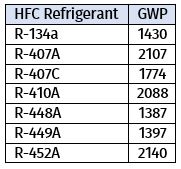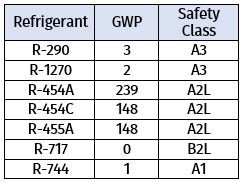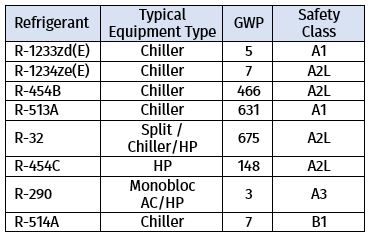Be in it for the long haul: why it’s important to consider the bigger picture with refrigerant choice
Climalife UK
 Neil Roberts, Senior Technical Sales Manager at Climalife discusses why it's important to consider the bigger picture with refrigerant choice
Neil Roberts, Senior Technical Sales Manager at Climalife discusses why it's important to consider the bigger picture with refrigerant choice
Since the ozone depletion issue was discovered back in the late 1970s, much to many engineers dismay, the number of refrigerants brought to market has ballooned. Having a constantly changing landscape is far from ideal but, for very valid reasons, regulation has kept moving the goal posts at regular intervals and therefore the myriad of refrigerants brought to market have been essential for the industry to maintain its vital role in society and steadily move towards the environmental goals which must be achieved.

At the end of this year the next step in the F-Gas phase down comes into force reducing the available TCO2e by ~30% compared to what is available this year and increases the need to use lower GWP refrigerants. If you are planning to install new RACHP systems this year, then now is the time to plan which refrigerants are the best choice going forward. A large amount of equipment is still available for use with relatively high GWP (>1000) refrigerants but are these the best long-term choices or is it time to look beyond todays ‘go to’ refrigerants and use a low GWP option?
Refrigerant choice for refrigeration systems
The F-Gas regulation has already mandated the use of low GWP for some new systems (table 1) but despite these bans a huge number of RACHP applications are still able to use refrigerants with GWPs up to 2500.
Table 1 – Current F-Gas GWP limitations for new equipment
The current most commonly used HFC refrigerants in applications outside of the bans are shown in table 2, and all have a GWP in excess of 1000. This is likely to be well above the average GWP that is sustainable during the lifetime of the equipment meaning that any service requirements will heavily rely on the availability of reclaimed refrigerant.
Table 2 - commonly used refrigerant GWP's
In an assessment report published by DEFRA in December 2022, it was estimated that unless the industry drastically improves how it handles recovered refrigerant, at best only ~30% of HFC refrigerants currently installed in systems will be available for re-use, meaning reclaim refrigerant will be a very finite resource. New equipment installed this year using the higher GWP refrigerants in table 2 cannot guarantee the availability of service quantities to fulfil the expected lifetime of the equipment. So, what are the alternatives?
In the past there has always been a retrofit option available but, for products with a GWP >1000, this time around, the options are very limited. R-134a used in medium temperature refrigeration applications can be retrofitted to R-513A, which with a 631 GWP may be a sustainable choice, but why not install it from new and save the expense of retrofitting later. Even better, why not consider a very low GWP option such as R-515B (293 GWP) R‑471A (148 GWP), R-1234ze (7 GWP) or R-1234yf (4 GWP).
For low temperature refrigeration applications R-407A, R-448A, R-449A and R-452A were good lower GWP alternatives to R-404A in the past, but are questionable as a new install in 2023. If these refrigerants are used in new installs, it is unclear if sufficient service quantities will be available throughout the expected lifetime of the equipment and retrofit options for these refrigerants are very limited due to the different safety class or significantly different performance characteristics of the very low GWP alternatives. Currently the only potential retrofit option for these products is R-470B which has a moderate GWP of 753.
It would make much more sense to plan to use a low or very low GWP refrigerant from day one and avoid the uncertainty and potential future costs. There are many options already available (table 3).
Table 3 - Very low GWP R-404A alternatives
Most of these alternatives will require a higher initial investment cost than the higher GWP options, but in many cases improved energy efficiency reduces the lifetime operating costs meaning the total cost of ownership (TCO) will be lower. This emphasises the importance to compare the overall performance of various technologies as the lowest GWP refrigerant does not always give the best energy performance and therefore not the best TCO. In addition, regulations and standards may limit the choice of refrigerants that can be used in different applications but suppliers like Climalife will be able to give advice on refrigerant performance and safety requirements.
Refrigerant choice in the air conditioning and heat pump sectors
In the air conditioning and heat pump sectors the choice of refrigerant is typically more led by the equipment manufacturer (OEM). Many OEMs are already supplying equipment with low or very low GWP refrigerants (table 4) covering the majority of applications.
Table 4 - Low GWP for AC & HP Applications
Wherever possible a low GWP option should be chosen to ensure long term sustainability of the equipment. Choosing a system operating with R-410A will require availability of reclaimed refrigerant for service requirements well before the end of the equipment lifetime, and the only available retrofit option is R‑470A which also has a relatively high GWP of 980. Any systems using R-407C also face an uncertain future as no retrofit options exist.
The F-Gas review
Another consideration before making any choice is the high probability that the F-Gas regulatory review, which is ongoing as you read this article, will introduce even stricter controls on the availability of higher GWP refrigerants and potentially could accelerate the demise of the higher GWP refrigerants. As we move deeper into the rabbit hole of the F-Gas phasedown it is sometimes difficult to see the route to compliance but there is often a solution and the team at Climalife always have the latest information to be able to provide guidance.
Remember to plan for Total Cost of Ownership
In these times of high costs and limited budgets it’s easy to fall into the trap of choosing the cheapest available option, but as we rapidly approach the next step in the current phasedown, taking time to choose a sustainable option, with a beneficial total cost of ownership will demonstrate its value well after the 2023 budgets have closed.




